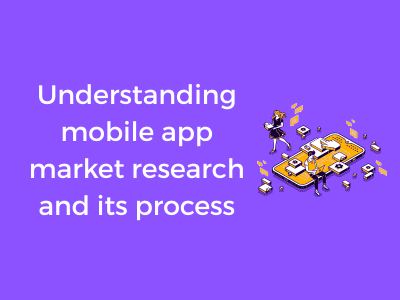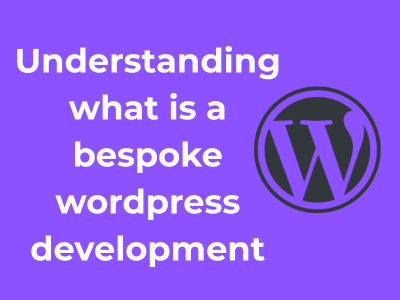Mobile app market research may sound like a big, complex task, but don’t let the term scare you—it’s actually an exciting opportunity to get to know the market you want to thrive in! Whether you’re a business owner, a developer, or just exploring app ideas, understanding the foundation of this research is key to putting your app on the map (and in those app stores).
Why Is Mobile App Market Research Essential?
You may wonder, “Can’t I just build the app and see what happens?” While that’s an adventurous thought, it’s not the best strategy for success in today’s competitive app market. Here’s why research is so important:
- Minimizes Risk: It helps spot potential pitfalls and ensures you’re designing an app that meets real needs, reducing the chance of launching something users might not connect with.
- Helps Define a Clear Focus: It’s challenging to stand out without a defined direction. Research helps pinpoint what niche or problem your app can solve.
- Saves Money: Investing time in proper research allows you to avoid wasted development costs on features that don’t resonate with users.
Where Do You Start?
Great question! Start with these steps to ease into the world of app market research:
- Set Your Objectives: Ask yourself: What do I want to achieve with my app? Whether you aim to solve a specific user problem or tap into a trendy market, defining your goal keeps your research efforts laser-focused.
- Identify Your Research Methods: Will you conduct surveys? Use focus groups? Or rely on tools like analytics dashboards? Picking the methods that suit your goals ensures you’ll collect relevant data.
- Understand Your Industry: Researching your app’s category—be it health, finance, games, or productivity—gives valuable insight into broader market trends.
Recognizing Target Audience Behavior and Preferences
Alright, let’s dive right into the heart of mobile app market research — understanding your users! If you’re creating an app, whether it’s for productivity, entertainment, or to solve a specific problem, the key to hitting the bullseye is knowing exactly who your target audience is and, more importantly, what makes them tick.

Why Does Target Audience Understanding Matter?
Imagine hosting a party and having no idea who your guests are. Some love pizza, others might prefer a sushi bar—and you end up serving peanut butter sandwiches! When you don’t understand your users’ behavior and preferences, developing an app is just like hosting that mismatched party. Apps are successful when they cater directly to users’ needs, habits, and, yes, even quirks.
Getting to Know Your Audience
The first step to connecting with your audience is building a clear profile. Ask yourself questions like:
- Who are they? What is their demographic information – age range, gender, income level, education?
- Where are they? Are they in a specific location, or is your app designed for global appeal?
- What are their habits? What do they spend their time doing? What apps do they currently use?
- What’s their need? What problems are they trying to solve? Why would they download your app?
This process is called creating user personas. When you get clear about your imaginary yet hyper-detailed user, it’s like having a roadmap in your hand.
Dive Deep Into User Behavior
Let’s take a step further beyond demographics. Knowing your audience’s behavior patterns is a goldmine. Pay close attention to:
- Screen Time: Are they glued to their phones for hours, or are they quick users who open apps for a few minutes? This helps determine how engaging and concise your app should be.
- Usage Times: Do they check their phones during their morning coffee, or are they night owls? Timing matters for notifications and updates!
- Preferred Features: What convenience are they looking for? Are they DIY enthusiasts who love customization or users who value simplicity?
Top tools like app analytics platforms and social media trends can provide you these insights with precision.
Understanding Preferences: The Emotional Connection
People often choose apps based on how they resonate emotionally. Think about the visuals, tone of language, colors, and ease of navigation. Try to uncover these preferences by:
- Monitoring Reviews: Apps similar to yours already have users leaving comments about what they love and what irks them.
- Conducting Surveys: A simple survey can reveal preferences firsthand. Make it fun and rewarding for them to participate!
When you tap into emotional preferences, you don’t just win users—you win loyal fans!
Competitive Analysis: Studying Other Applications
So, you’ve got this amazing idea for a mobile app, and you’re certain it’s going to be a game-changer. That’s fantastic! But before diving headfirst into development, let me tell you about one of the smartest and most pivotal steps in your journey—competitive analysis. No matter how unique you think your idea is, there are most likely apps out there doing something similar (or at least trying). Understanding what these apps bring to the table and where they fall short can help you rise above the competition.
Why Competitive Analysis Is a Goldmine
First off, let me explain why this step is so important. Competitive analysis helps you:
- Spot gaps in the market that your app can fill
- Identify key features other apps have—and whether customers love or hate them
- Understand how competitors are attracting and retaining users
- Shape your app to stand out by offering something truly distinct
Essentially, it’s like assembling a roadmap by learning from the successes and failures of others. Why reinvent the wheel when you can make a better one?
Steps to Conduct a Winning Competitive Analysis
1. Identify Your Competitors
Start by defining your app’s niche. Whether it’s fitness, productivity, or gaming, you need to know who’s ruling the roost in your area. Use app stores (like Google Play Store and Apple’s App Store) to search for apps with features similar to what you’re planning. Don’t overlook indirect competitors—apps that may not do exactly what yours does but are targeting the same audience for a similar purpose.
2. Evaluate Their Features
Dive deep into what these apps offer. Do they have innovative designs? Are there standout features that users absolutely love? Look through reviews and ratings to see what users are repeatedly praising or criticizing. And hey, don’t limit yourself to just the positive stuff—sometimes the negative reviews are where you’ll find golden ideas for improvements your app can deliver.
3. Study Their Marketing Strategies
Check out how your competitors are attracting users. Are they active on social media? Do they have partnerships or collaborations? A killer launch strategy can make as much of a difference as the app itself. Try signing up for their newsletters or following their updates—you’ll get insights into their engagement methods.
4. Analyze Their Monetization Models
Are they selling via subscriptions? Offering in-app purchases? Maybe it’s a freemium model with premium upgrades. Understanding how competitors make money can help you decide what kind of payment options might work best for your app. And remember, users love trying free apps, so keep that in your strategy considerations!
Tools for Competitive Analysis
Thankfully, you don’t have to do all of this manually! There are some great tools that can help:
- App Annie: Provides analytics on downloads, rankings, and revenue.
- Sensor Tower: Amazing for getting insights into competitors’ marketing strategies and keyword rankings.
- Google Trends: Track search trends and the popularity of app-related keywords over time.
Using these tools saves you time and provides a clearer picture of where you stand.
Assessing Trends in Mobile App Designs and Features
Hey there! So, you’re diving into the world of mobile app market research, and now it’s time to talk about trends in app designs and features. This part is super important because trends can make or break the appeal and functionality of your app. Let’s explore how staying on top of trends can give you that competitive edge while keeping it all fun and inspiring!
Why Do Trends Matter?
Trends aren’t just passing fads—they’re signals showing where the industry is headed and what users value. A modern, thoughtfully designed app can mean the difference between people loving your app or deleting it after a week. By paying attention to trends, you ensure your app stays relevant and user-friendly.
Focus on User Expectations
Users today expect apps to look sleek and operate smoothly. If they’ve seen gorgeous designs and innovative features in other apps, they’ll expect yours to provide a similar experience—if not better! Here’s what you should focus on:
- Simplicity: People love minimalistic designs that reduce clutter. Nobody wants to deal with a crowded screen full of confusing options.
- Intuitive Navigation: Nobody reads instructions anymore (really, who has the time?!). Ensure users can figure out how to use your app without needing a “how-to” guide.
- Accessibility: Apps with features that cater to users of all abilities (voice controls, high-contrast themes, or larger text options) are a big plus.
Where Can You Spot Trends?
Keeping up with trends doesn’t have to be overwhelming. Here are a few places to explore:
- **Tech Conferences and Events:** Look up annual tech summits like Apple’s WWDC or Google’s I/O, where new ideas and emerging trends are showcased.
- Mobile App Awards: Check out the winners of app awards to see what’s trending in the design and feature spaces.
- App Stores: Spend time on the Google Play Store or Apple’s App Store and scroll through the most-played or featured apps for inspiration.
Key Trends in Features to Watch
So, what specific features should you consider for your app? Have a look at these crowd-pleasers:
- AI and Personalization: Users love apps that feel “smart” and tailor recommendations based on their behavior.
- Augmented Reality (AR): Apps like Instagram and Pokémon GO have introduced fun AR features. It’s no surprise they’re going strong!
- Voice Interactions: With Siri, Alexa, and Google Assistant leading the way, voice features are definitely worth exploring.
- Dark Mode: Many users prefer dark mode for better usability and to save their phone’s battery life.
Different Tools Used for Mobile App Market Research
Let’s talk about something that makes mobile app market research not only manageable but also incredibly efficient: tools! If you’re someone who loves the idea of diving into market research but feels overwhelmed thinking about where to start, don’t worry. The right tools can make a world of difference, and today, I’m here to guide you through some amazing options that can help give your research process the boost it needs.
Why Use Tools for Market Research?
Market research for mobile apps is no walk in the park. Gathering data, understanding user behavior, identifying trends, and analyzing competition takes time and resources. That’s precisely where research tools come into the picture. They simplify tasks, making data collection and interpretation a whole lot easier and more accurate. Plus, they save you precious time so you can focus on what you do best: crafting an amazing mobile app experience!
Essential Tools You’ll Want to Explore
Whether you’re just beginning or you already have some research experience, here are a few tools worth considering:
- Google Analytics: One of the most popular analytics platforms, Google Analytics provides insights into user behaviors and preferences. It can help you track user data, understand demographics, and see which app features resonate the most with your audience.
- Sensor Tower: If you want to dive deep into app store insights, Sensor Tower is your best bet. It allows you to analyze app store performance, track your competitors, and identify keyword opportunities for better visibility.
- App Annie: This is an all-in-one market data tool for app analytics. It allows you to monitor downloads, revenue metrics, audience demographics, and even market trends. An easy-to-use dashboard keeps everything at your fingertips.
- SurveyMonkey: Want direct feedback from potential users? Create simple and effective surveys with SurveyMonkey. You can explore users’ preferences, habits, and expectations for your app with precision and clarity.
- Statista: If you’re eager for in-depth statistics and reports about the mobile app industry, Statista is a goldmine. It is particularly useful for spotting trends and growth opportunities within your market niche.
Making the Most of Research Tools
While these tools are excellent, they’re only as effective as the way you use them. A tool won’t automatically solve all your research challenges—it’s more like a helpful partner in the process. Here are some tips to get the most out of them:
- Define Your Goals Clearly: Before diving into a tool, think about what you want to learn. This will help you focus and get actionable insights instead of ending up with a mountain of vague data.
- Combine Tools for a Comprehensive View: Don’t rely on just one tool. Pairing analytics with surveys or combining competitor analysis with trend research can paint a richer picture of the market.
- Stay Consistent: Research isn’t a one-time activity. Keep revisiting your tools regularly to stay updated with evolving trends and user preferences.
Analyzing Feedback and Gathering Insights
Gather round, because this is one of the most exciting and meaningful parts of mobile app market research! Analyzing feedback and gathering insights not only connects you closer to your users but also helps you refine your app in ways that genuinely make a difference. It’s where ideas meet real-world data and magic starts to happen. Let’s break it down together.
Why User Feedback is Pure Gold
Think about it—your app exists to solve problems, entertain, or simplify life for users. Hearing directly from users about what works, what doesn’t, and what features they’d love is like finding a treasure map. **User feedback is critical because it reveals real-world experiences, not just what you assume. Genuine opinions can illuminate blind spots in design, functionality, or usability.
Where Do You Collect Feedback?
Feedback won’t magically land on your desk. You have to actively seek it out in different ways. Here’s how:
- App Reviews: Both app store reviews and ratings often provide unfiltered opinions. While some may be harsh, many offer specific ideas or highlight bugs.
- In-App Surveys: Well-timed, short surveys embedded inside your app are a great way to gather quick insights without disrupting the user experience too much.
- Beta Testing Feedback: Beta testers are your saviors. As early adopters, they can provide a treasure trove of insights before your app goes live to a broader audience.
- Social Media Conversations: Keep an ear to the ground on platforms like Twitter, Reddit, or Facebook. Users often air their joys and frustrations here.
- Dedicated Feedback Forms: Adding a section within your app for users to provide feedback anytime encourages open dialogue.

Listening Isn’t Enough—Analyze the Data
Gathering feedback is step one, but the real work begins when you start to analyze and interpret the information. Here’s how to approach it:
- Group the Feedback: Separate comments into categories like bugs, feature requests, interface design, or overall impressions.
- Spot Trends: Is a particular complaint being raised multiple times? Chances are, it’s something worth paying attention to.
- Prioritize Issues: Not all feedback is equal. Determine which suggestions are most impactful and realistic to implement.
- Compare to Metrics: Cross-check feedback against quantitative data like retention rates or feature engagement. This adds context to user sentiment.
Translating Research Data into Actionable Strategies
So, you’ve done all the hard work—gathered data, analyzed trends, dissected competitors, and closely studied user habits. Great job! But now comes the million-dollar question: how do you take all that raw data and turn it into something useful? Translating research into actionable strategies is where the magic happens, and trust me, this step can make or break your mobile app’s success. Let’s dive into how you can make your research truly count.
1. Identify Key Insights
Not all data points are created equal. Once you have your research data in hand, the first step is to look for insights that stand out. These are the nuggets of wisdom that can directly influence your decisions. Think of it like sifting for gold—you’re looking for those shining ideas that have a big impact. For example:
- If your target audience spends the majority of their time accessing a handful of features, focus on enhancing those.
- If your competitors are excelling in areas where you’re lagging, these could be strategic areas for innovation.
2. Prioritize Your Actions
Let’s be real: you can’t implement every idea at once. And that’s okay! This is where prioritization comes into play. Create a list of potential strategies, weighted by their expected impact and feasibility:
- High-Impact, Easy-to-Implement: These are no-brainers. Go after these first.
- High-Impact, Challenging: Develop a systematic plan for these. Think long-term goals.
- Low-Impact, Easy-to-Implement: Sure, sprinkle these in when you have extra bandwidth.
- Low-Impact, Challenging: These are the ones to park for now—and maybe forever.
3. Set Clear Goals and Metrics
Concrete goals help you stay focused on what success looks like. Let’s say you’ve identified that your app’s user retention is lower than industry averages. That’s your high-priority area. Now, set clear metrics to measure progress:
- Increase average session duration by 20% in six months.
- Boost user retention rates to 70% within the first 30 days of use.
Be sure to keep these goals SMART—Specific, Measurable, Achievable, Relevant, and Time-bound.
4. Build a Strategy Roadmap
Think of your strategy like a road trip. You know your destination (your goals), and now you need directions to get there (your roadmap). A good strategy roadmap breaks your plan into phases:
- Phase 1: Immediate actions (e.g., updating app design or fixing performance glitches).
- Phase 2: Mid-term goals involving trend-based feature rollouts.
- Phase 3: Long-term innovative projects informed by deeper research.
5. Test, Adapt, Repeat
Here’s the thing: even the best-laid strategies require tweaks along the way. Once you start implementing changes, keep evaluating what’s working and what’s not. Your research is not a one-and-done deal—go back, reanalyze feedback, and refine. It’s all part of the process!











